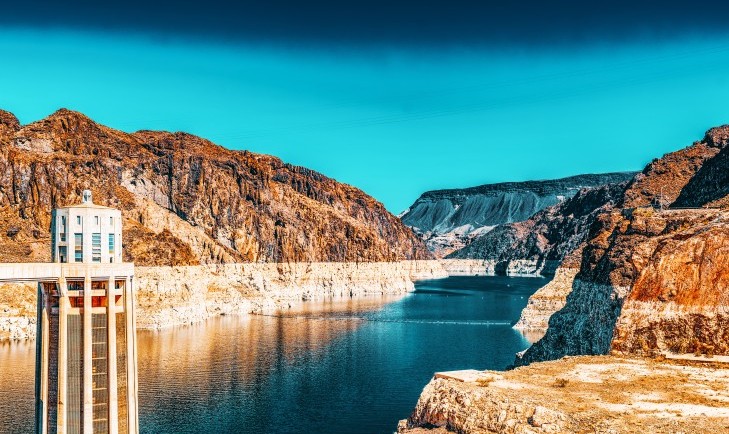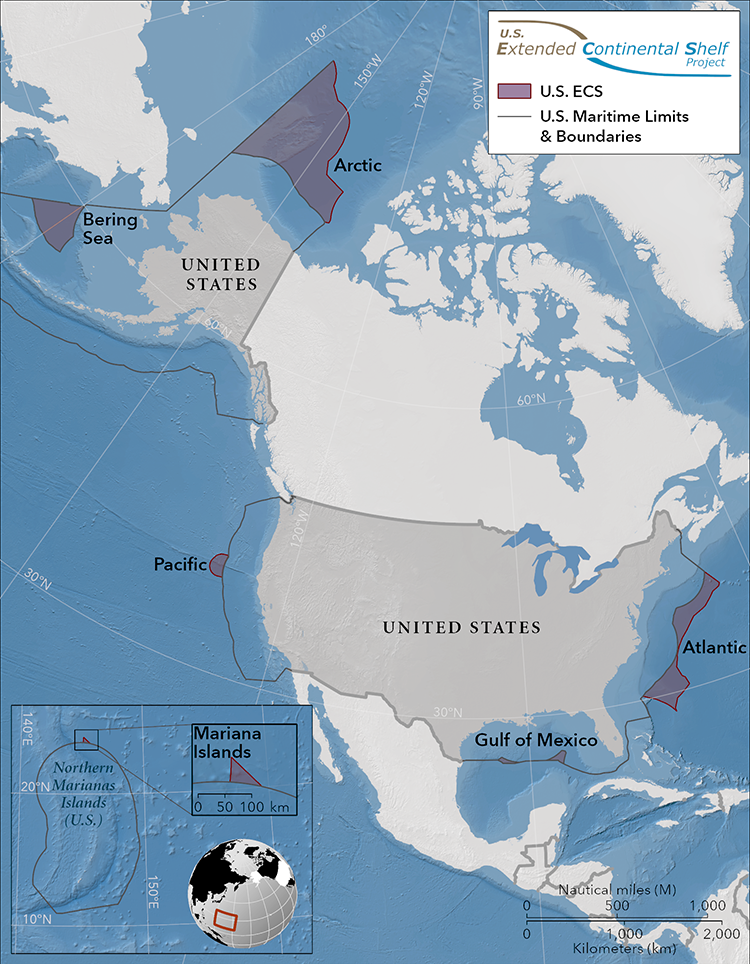01/04/24
Best of the West: Regional water pacts; an international power partnership; grant writing assistance; the extended continental shelf; and a new species of dinosaur

The Western Governors' Association keeps you updated on the latest news in the West. Here are the top stories for the week starting January, 1 2024. (Photos courtesy of Brian Kinney, U.S. Department of State, and Henry Sharpe).
While the West’s water woes are far from over, several landmark agreements were announced to end 2023 that have provided some hope for the region’s collective efforts to address the ongoing drought.
During the annual Colorado River Water Users Association conference in Las Vegas, Colorado River Basin stakeholders from California, Nevada, and Arizona announced a pact to conserve at least 3 million acre-feet of water in Lake Mead through 2026. Most of the cuts would be realized by compensating water users with $1 billion in federal funds from the Inflation Reduction Act for not using their full water rights.
In the upper basin, The Colorado River Water Conservation District and Xcel Energy formalized an agreement that will allow the district to buy water rights from Xcel’s Shoshone Power Plant near Glenwood Springs, Colorado for $98.5 million. The deal will ensure stable flows for water users and ecosystems below the power plant, from Glenwood Springs to the Utah border.
Other states enacted innovative plans to enhance their existing water supply.
The California State Water Resources Control Board approved regulations to allow the development of treatment protocols for converting wastewater into high-quality drinking water. The recycling process, known as direct potable reuse, enables water systems across the state to generate a climate-resilient water source while also reducing the amount of wastewater discharged to rivers and the ocean.
New Mexico Governor Michelle Lujan Grisham announced the state’s plan to purchase up to $500 million worth of treated brackish water, which is found in many of the state’s aquifers, for use in projects such as water-intensive manufacturing.
“This is innovation in action,” Governor Lujan Grisham, said. “We’re leveraging the private sector to strengthen our climate resiliency and protect our precious freshwater resources.”
Kansas Governor Laura Kelly recently formed the Kansas Water Subcabinet to discuss water-related data and policy and strengthen state government initiatives on emerging and long-term water issues. The group’s tasks could include developing cross-agency goals and strategies on Kansas’ long-term water quantity and quality issues, strengthening service delivery of the state’s water grants and programs, and responding to upcoming and short-term water-related issues while strategizing preventative measures. The subcabinet will also prioritize securing federal or private funding opportunities across agencies to leverage the state’s historic recent investments in the Kansas Water Plan.
“My administration has been laser-focused on finding and implementing sustainable solutions to address our state’s water concerns,” Governor Kelly said. “This subcabinet ensures we are all pulling in the same direction in those efforts and building an all-of-government approach to water issues.”
Montana Governor Greg Gianforte and the Montana Department of Natural Resources and Conservation updated the Montana Drought Management Plan to improve drought preparedness and drought resilience. According to Governor Gianforte, the last update occurred nearly three decades ago.
The effects of water programs proposed earlier in 2023 are also beginning to produce tangible results.
With $125 million appropriated by the U.S. Bureau of Reclamation for the System Conservation Pilot Program, which resulted in 64 projects across the four Upper Basin states, consumptive use on the Colorado River in the Upper Basin was reduced by about 38,000 acre-feet of water.
The Washington County Water Conservancy District in Utah rolled out a program incentivizing the replacement of ornamental turf with water-wise landscaping. With a rebate of $2 for every square foot of grass removed, the district has paid out $1.8 million with over one million square feet of turf replaced as of December 2023.
International Power Partnership: Nevada Governor Joe Lombardo signed a Declaration of Understanding with Jesper Møller Sørensen, Ambassador to the United States from Denmark, to explore opportunities for collaborating on renewable energy projects. One of the first projects is targeting the establishment of a renewable energy powered industrial park in Lincoln County that could attract $260 million in investment and create 150 jobs. The future collaboration will also explore opportunities for creating similar parks in other areas of Nevada.
Grant Writing Assistance: Colorado Governor Jared Polis launched a grant writing and technical assistance program to help local governments and tribes access federal funding. The IIJA and IRA Grant Writing and Technical Assistance Program is designed to help applicants pursue funding from the Infrastructure Investment and Jobs Act and the Inflation Reduction Act by providing grant writing consultants at no cost to the awarded entity.
Nursing Aid: The DaVita Giving Foundation awarded Western Governors University's Michael O. Leavitt School of Health a $1 million grant to support more than 1,500 nursing students in Start Early, a program co-created by DaVita Inc. and WGU to help increase nursing degree completion at the university nationwide.
 Extended Continental Shelf: Citing international law, The U.S. State Department recently defined the outer limits of the U.S. continental shelf in areas beyond 200 nautical miles from the coast, known as the extended continental shelf (ECS). In doing so, it enlarged the country’s geography by a million square kilometers — the equivalent of nearly 60% of Alaska’s land mass. The new additions are spread across seven areas of ocean that hold valuable resources and critical habitat. Like other countries, the United States has exclusive rights to conserve and manage the living and non-living resources of its ECS. The United States also has jurisdiction over marine scientific research relating to the ECS.
Extended Continental Shelf: Citing international law, The U.S. State Department recently defined the outer limits of the U.S. continental shelf in areas beyond 200 nautical miles from the coast, known as the extended continental shelf (ECS). In doing so, it enlarged the country’s geography by a million square kilometers — the equivalent of nearly 60% of Alaska’s land mass. The new additions are spread across seven areas of ocean that hold valuable resources and critical habitat. Like other countries, the United States has exclusive rights to conserve and manage the living and non-living resources of its ECS. The United States also has jurisdiction over marine scientific research relating to the ECS.
 New Dino Alert: Paleontologists in North Dakota have discovered a new species of mosasaur. These giant meat-eating aquatic lizards swam the Earth’s seas about 80 million years ago during the late Cretaceous period. The new species, which would have been roughly 24 feet long, is named Jormungandr walhallaensis after a sea serpent in Norse mythology named Jörmungandr and Walhalla, North Dakota where its fossils were found.
New Dino Alert: Paleontologists in North Dakota have discovered a new species of mosasaur. These giant meat-eating aquatic lizards swam the Earth’s seas about 80 million years ago during the late Cretaceous period. The new species, which would have been roughly 24 feet long, is named Jormungandr walhallaensis after a sea serpent in Norse mythology named Jörmungandr and Walhalla, North Dakota where its fossils were found.